BMW i4 M50 proves that M-series has an electric future
Display the M badge is something that the i4 M50 doesn’t take lightly, instead, it shows that an electric vehicle can be a fully-fledged sports car

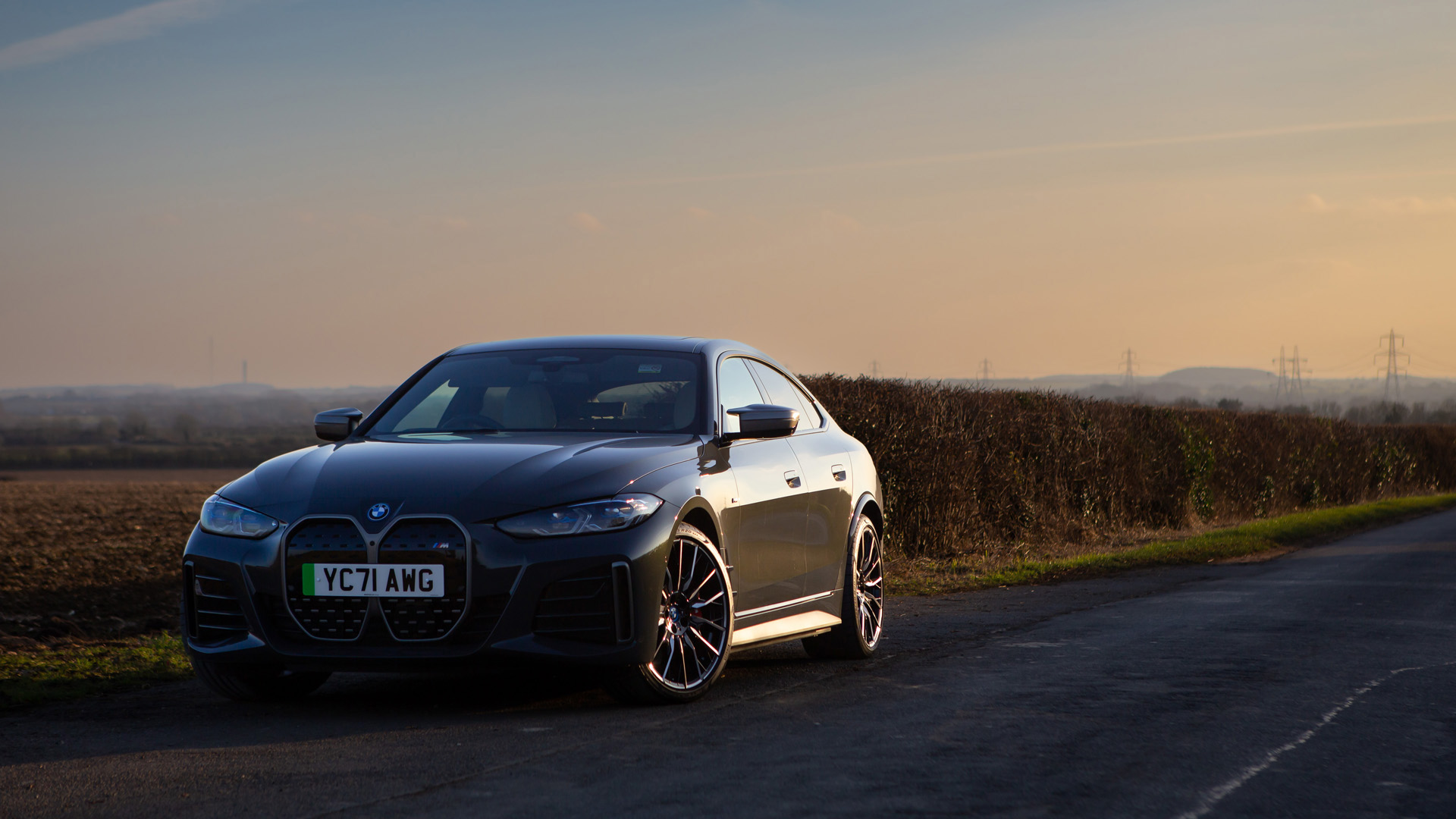
The BMW i4 isn’t the first electric car to come from the company. In fact, it has toyed with electric models since the 1970s and had a full line-up of electric vehicles for over 10 years. BMW’s i range was first introduced in 2011 with the initial i3 all-electric model and the i8 plug-in hybrid electric.
While both of these models have now been discontinued, BMW now offers two fully electric solutions: the iX SUV and the i4 Gran Coupe. Within the i4 model are two variations, a single motor i4 edrive40 and the sportier dual-motor i4 M50. It’s this M50 model that I tested recently.
What makes the i4 M50 special is that it's the first all-electric BMW to be adorned with an M Series badge. The M Series is its motorsport range of vehicles that come with upgrades and tuning to make them the ultimate driving machines. Giving this designation to an electric car is a bold move and one that demonstrates the company’s commitment to electric power. But can the i4 M50 live up to the badge?
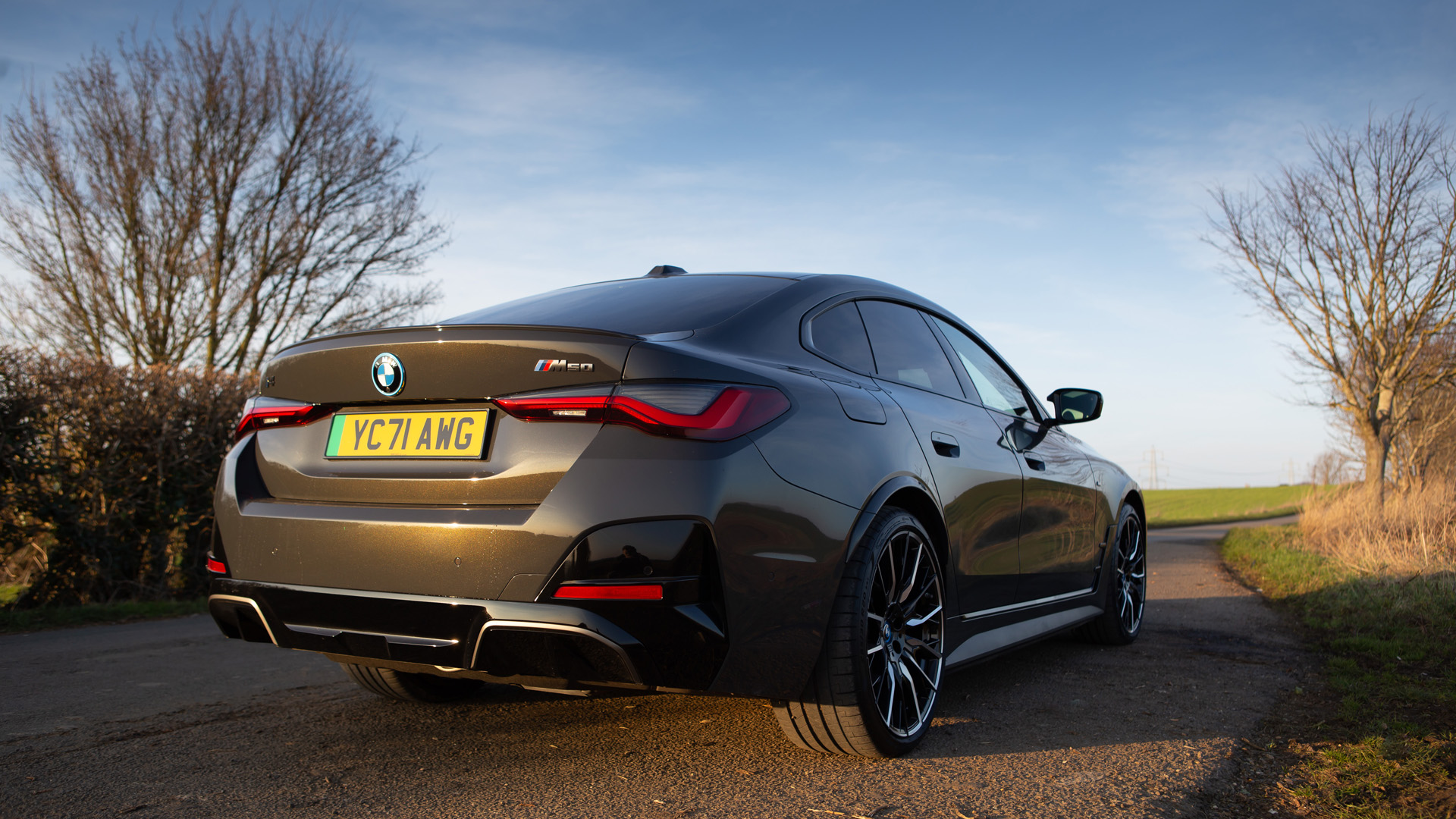
A great looking car, but practically identical to the 4-series design – even down to those exhaust arches
Price and availability
First announced in June 2021, the BMW i4 M50 starts from £63,905 / $65,900 / AU$124,900 and is available now in the UK, with US and Australia models available in the next few months.
The model I tested had the Dravit Grey metallic finish, the upgraded 20-inch alloys, the technology and visibility packs taking the total price up to £69,755.
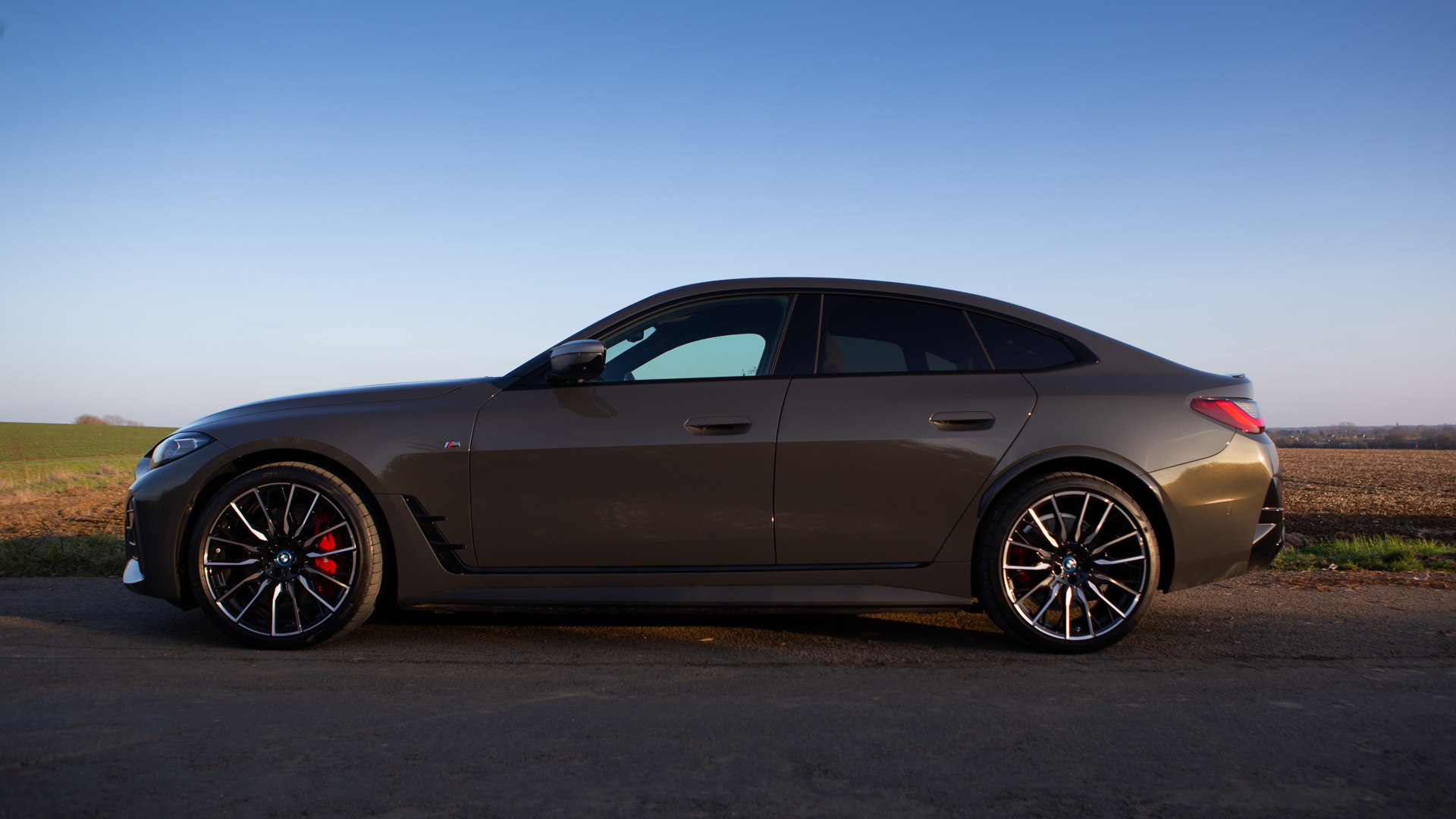
The 20-inch alloys certainly stand out, though probably don't help the range.
Design and features
This is not a fresh design for BMW. The i4 is based on the 4-series model and looks indistinguishable from the petrol and diesel versions. Even the folds where the exhausts would sit remain. This is no bad thing as the 4-series is a great-looking car. The i4 M50, therefore, is a very stylish mid-sized sedan but is less noticeably an electric car than many of its competitors.
There are, of course, subtle clues to its electric power, such as the solid front grill, the lack of actual exhausts, as well as a large number of cameras around the body. At first glance though, you’d barely notice. I even felt like I had to justify parking in the EV charging spots at times.
Get all the latest news, reviews, deals and buying guides on gorgeous tech, home and active products from the T3 experts
Non-BMW enthusiasts should note the difference between the M Sport models, which purely have a sporty appearance, and the M models that have proper performance upgrades, as the i4 is available in both flavors.
The i4 M50 delivers 400kW / 544hp from its dual motors, compared to the 250kW / 340hp of the single motor i4 model. In addition to this extra power, choosing the M50 model includes 19-inch wheels (upgradable to 20-inch versions), ambient lighting, M Sport brakes, an M Sport spoiler, and both the IconicSounds Electric and the eDrive exterior sounds.
The smart headlights or laser lights as BMW calls them, include adaptive headlights and cornering lights that turn with the wheel, giving you better visibility around bends at night. This came in handy on a trip down some country lanes.
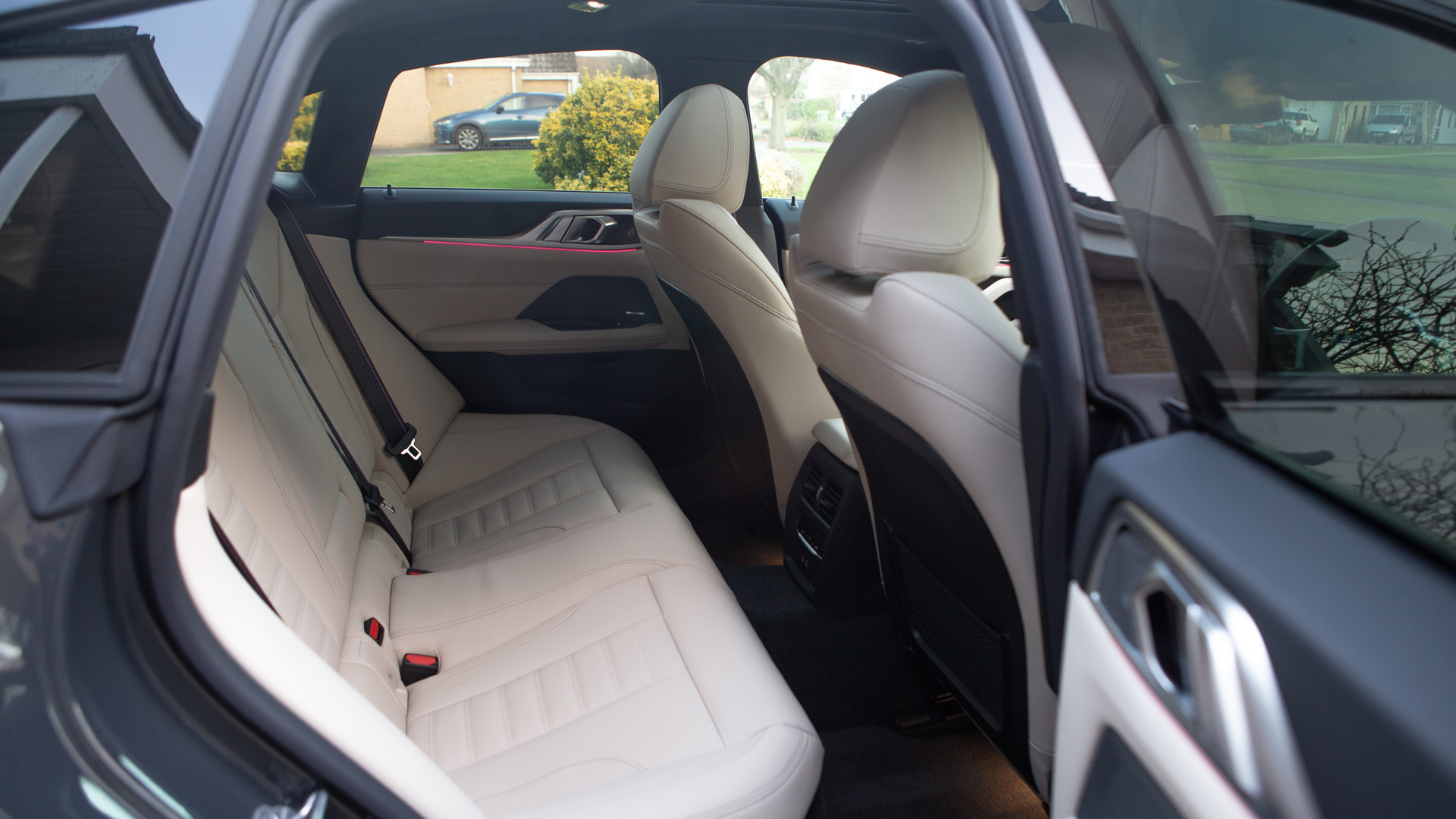
A decent rear seat, though a small door opening.
Inside, there’s plenty of technology on hand. The sweeping screen that runs from behind the steering wheel to the center console actually comprises a 14.3-inch instrument and a 12.9-inch center screen behind a single piece of glass. This is complemented by a color head-up display for the driver, which provides both speed and directional information.
Other than that, the i4 remains a fairly standard BMW experience. The center console mirrors that of the 4-series, with the central air vents above a covered storage area and the short drive selector alongside the iDrive controls. The steering wheel also offers a range of controls for entertainment and driving functions. This includes active driving assistance, telephone and voice control.
There’s plenty of room for both front and rear passengers in the i4 as well as a decent-sized boot. If you need more space, the rear seats also fold forward, with a two-thirds split. You do have to watch that large items don’t block the electric closing, however, as it does get fairly shallow at the entrance.
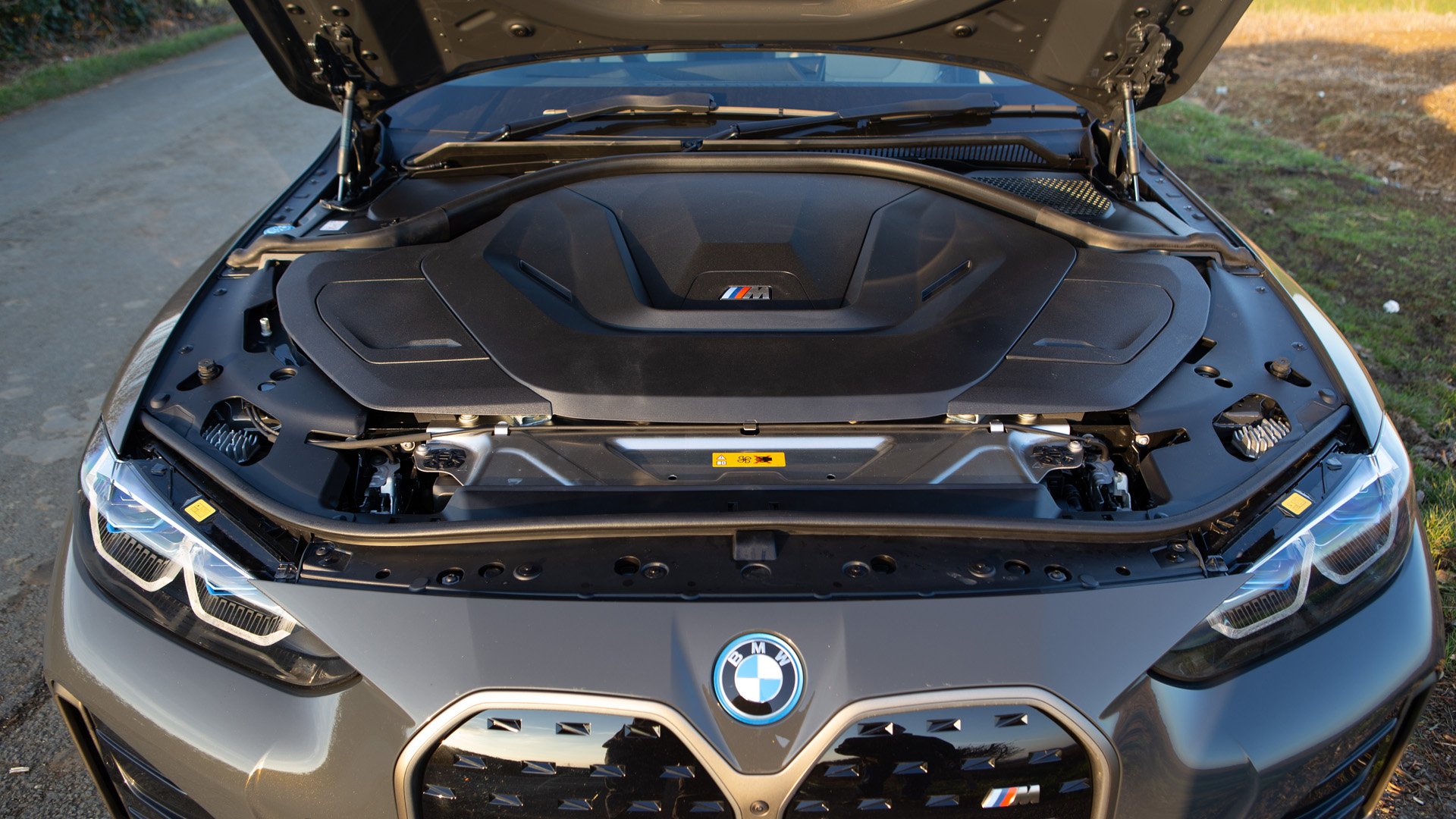
The electric motor is in the front, due to the use of the ICE chassis.
Driving experience
Driving the BMW i4 M50 is also a very familiar experience. Yes, you have the silence of driving at slow speeds but once you’re shifting, you can easily forget you’re in an electric car at all. That is until you take your foot off the accelerator and the regenerative braking kicks in. This can feel like quite a jolt at times but you soon get used to it and that energy going back into the battery tempts you to make more use of it.
Electric vehicles have all taken different approaches to sound and here BMW has really explored the possibilities. The i4 M50 includes the BMW IconicSounds Electric, which has been designed by the Academy Award-winning composer, Hans Zimmer. These are designed to embody the experience of driving an M-series car and provide audio feedback when you accelerate. It’s not a fake engine noise, nor is it a purely electric whir like on the Porsche Taycan, it’s somewhere in between. It’s very inoffensive and it does help give you a sense of power, but I can’t say I loved it. If you have other things happening – like passengers chatting or music playing – you forget it’s there and can always turn it off if you really want.
I did find that compared to other EVs, BMW’s gear selector feels overly complicated. The park button sits at the back of the stick, while side buttons must be pressed to first engage drive. It’s a small thing you would get used to but it took me a few goes most times I started out on a journey.
The big question is, does this car perform like an M series? In terms of handling, it definitely does. The dual-motor arrangement does make it perform more like an all-wheel-drive car than a typical rear-wheel drive but the handling is superb and there’s buckets of power available at any speed. If anything though, it doesn’t feel quite as wild as the petrol M-series models and I do miss having the paddle gear shifts – even though there are no gears to worry about here.
You get four driving modes on the car, from Eco Pro and Comfort to Sport and Sport Boost. It’s that Sport Boost mode where you get that full 536hp and the 3.7-second acceleration but even in Comfort and Sport modes, it really shifts.
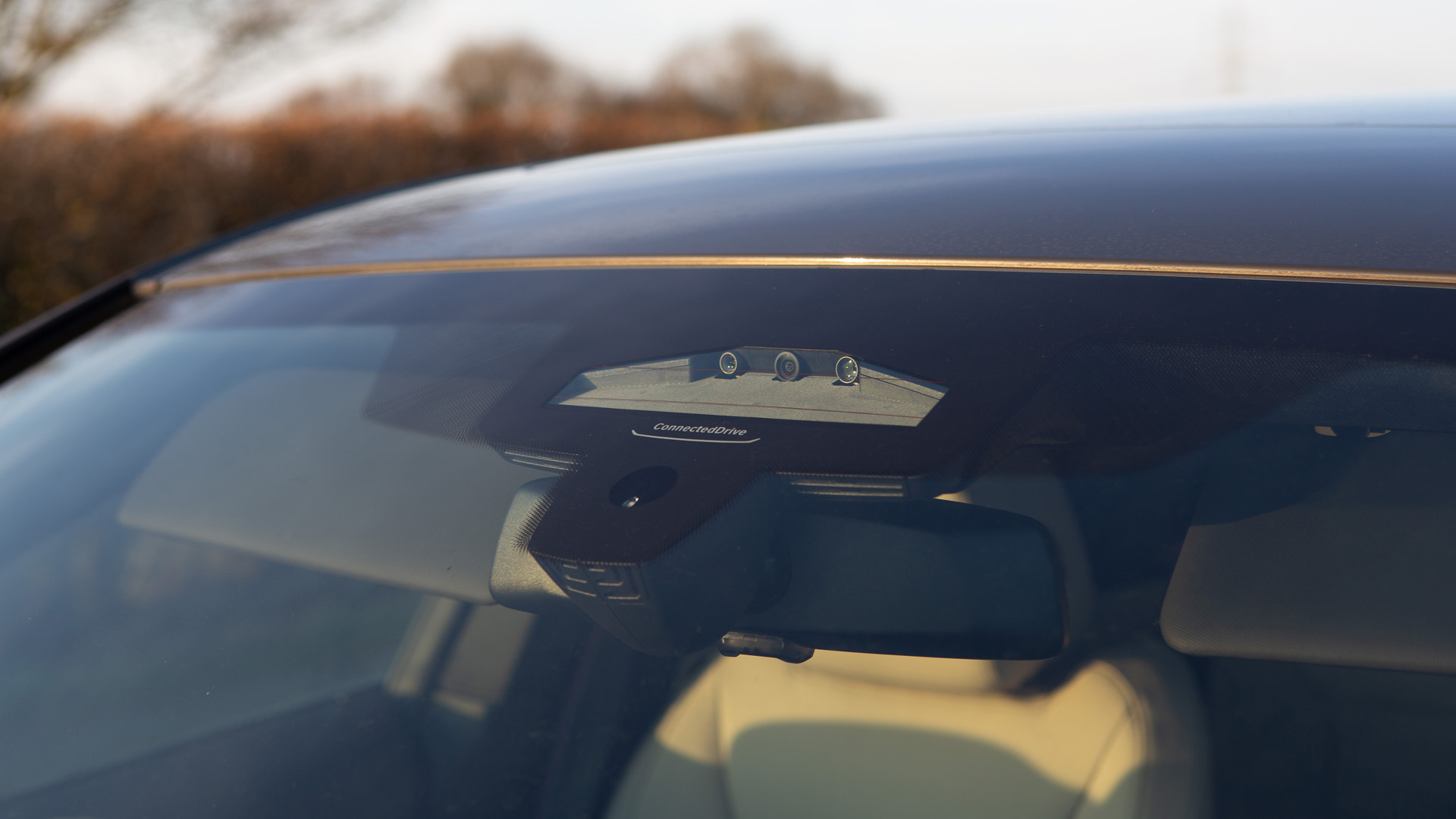
Cameras everywhere. These are used for the driving assistance and parking functions.
Technology and range
Technology in the BMW i4 M50 is handled really nicely and there’s plenty on offer. The main system is powered by the latest version of BMW’s iDrive (version 8) and provides a decent selection of navigation, media control and vehicle dynamics. This can be controlled directly by touchscreen, via using the traditional BMW iDrive dial in the center console, or by voice.
The system is also compatible with both Android Auto and Apple CarPlay, connecting to both wirelessly from your phone. There’s also wireless charging for your phone in the center console hideaway to keep you topped up – I found if you didn’t, using CarPlay can soon drain your phone battery.
What is nice here is that CarPlay fully integrates with iDrive once connected, and doesn’t feel like you’re running two systems in the way it can on other EVs. The head-up display will show mapping from either iDrive or your CarPlay/Android connection, though I found that the BMW map did show a little more detail. I did find one downside of the head-up display was that polaroid sunglasses filter out the display, making it difficult to see.
Sound in the i4 comes from Harman Kardon’s Logic 7 system, which really packs a punch when you crank it up. Whether you’re listening to the radio or streaming music from your phone, there’s plenty of bass and clarity here.
Cameras around the car provide top, panorama or 3D views of the vehicle and its surroundings for parking and navigating tight entrances. It automatically kicks in when needed and when reverse gear is selected.
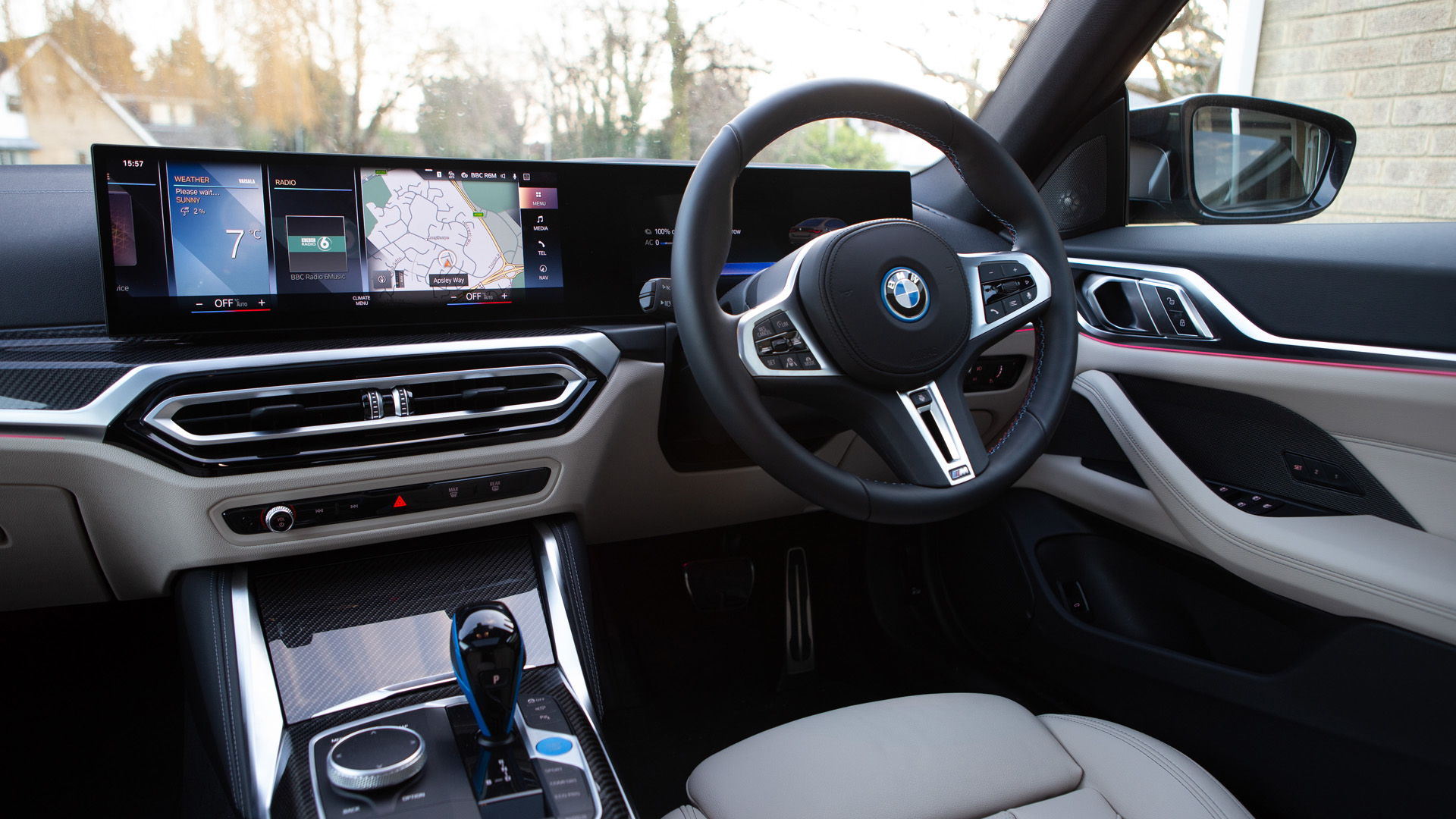
That big swooping display is impressive, especially when paired with the head-up display.
The Active Driving Assitant Pro is the i4’s semi-autonomous control. It uses a combination of the car’s cameras and radar systems to provide lane and steering assistance, smart cruise control, emergency stop assistance and emergency braking. For motorway driving the lane assistance and cruise control is extremely good. Provided you keep a light touch on the steering wheel, the car will take care of all the steering, acceleration and braking you need for your journey. Using the buttons on the steering wheel you can quickly align your speed with the current speed limit. It then asks you if you want to adjust to a new speed when the limit on the road changes. All of this made longer journeys almost effortless.
The technology plus option, which includes the head-up display, driving assistant, park assist plus, wireless charging, a Wi-Fi hotspot and Harman/Kardon Surround sound speakers add £1900 to the price in the UK. In the US these are all priced separately.
For such a sporty model, the range on the i4 M50 is impressive too. Fully charged, it offers a maximum of 270 miles of range, which is plenty for most journeys around the UK, and more than enough to get you between charging points in the US. On a cold morning, this range did drop significantly, to around 230 miles but that’s still not terrible.
Using a DC fast charger, it can charge at up to 200kW, so it’s possible to get up to 97 miles of range with a 10-minute charge – providing the charger is running at full speed. In practice, it took between 40 minutes and an hour to charge back up to 80% from around 30%. As with any EV, having a home charger transforms your experience and means you can set off fully charged rather than having to search for a charging station. The i4 M50 does come with a Flexible Fast Charger, which plugs into a regular power socket. This will give you overnight charging at a slow rate but buying a dedicated wall charger is the best option.
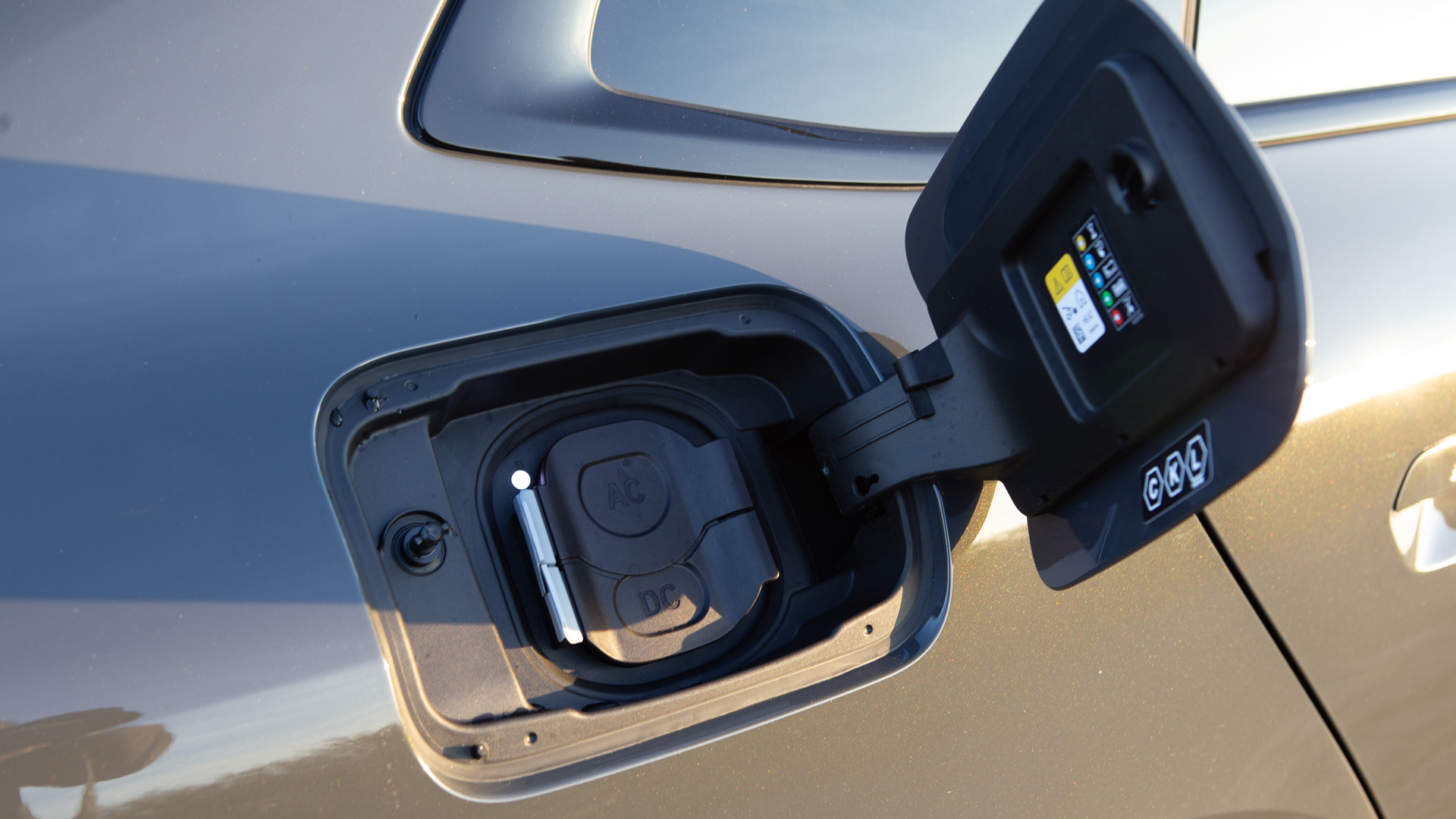
Fast DC charging is available at up to 200kW.
Should I buy one?
As the first electric M-series model, the i4 M50 does its job honorably. It has the power and handling worthy of its badge even if that feels a little well-controlled at times. Electric vehicles are proving that you don’t have to choose between performance and plugging in. Not only is this a great sports model, but it still provides a decent range and all of the driving assistance options you could ask for.
While visually, the i4 M50 is very close to its ICE predecessors, it provides some impressive features that rival some of the best electric cars on the market. It’s a safe option for drivers that are taking their first footsteps into electric driving.
I really enjoyed putting the i4 M50 through its paces on back roads but also its ability to take over on highways, reducing my input to more of an overseer than an active participant. This isn’t hands-free driving by any means, but it’s a lot less stressful than fully manual driving.
The i4 M50 might not suit those drivers who spend all day on the road but for standard commuters and weekend trips, it will do you nicely. Picking this over the standard 4-series should be a no-brainer for most.
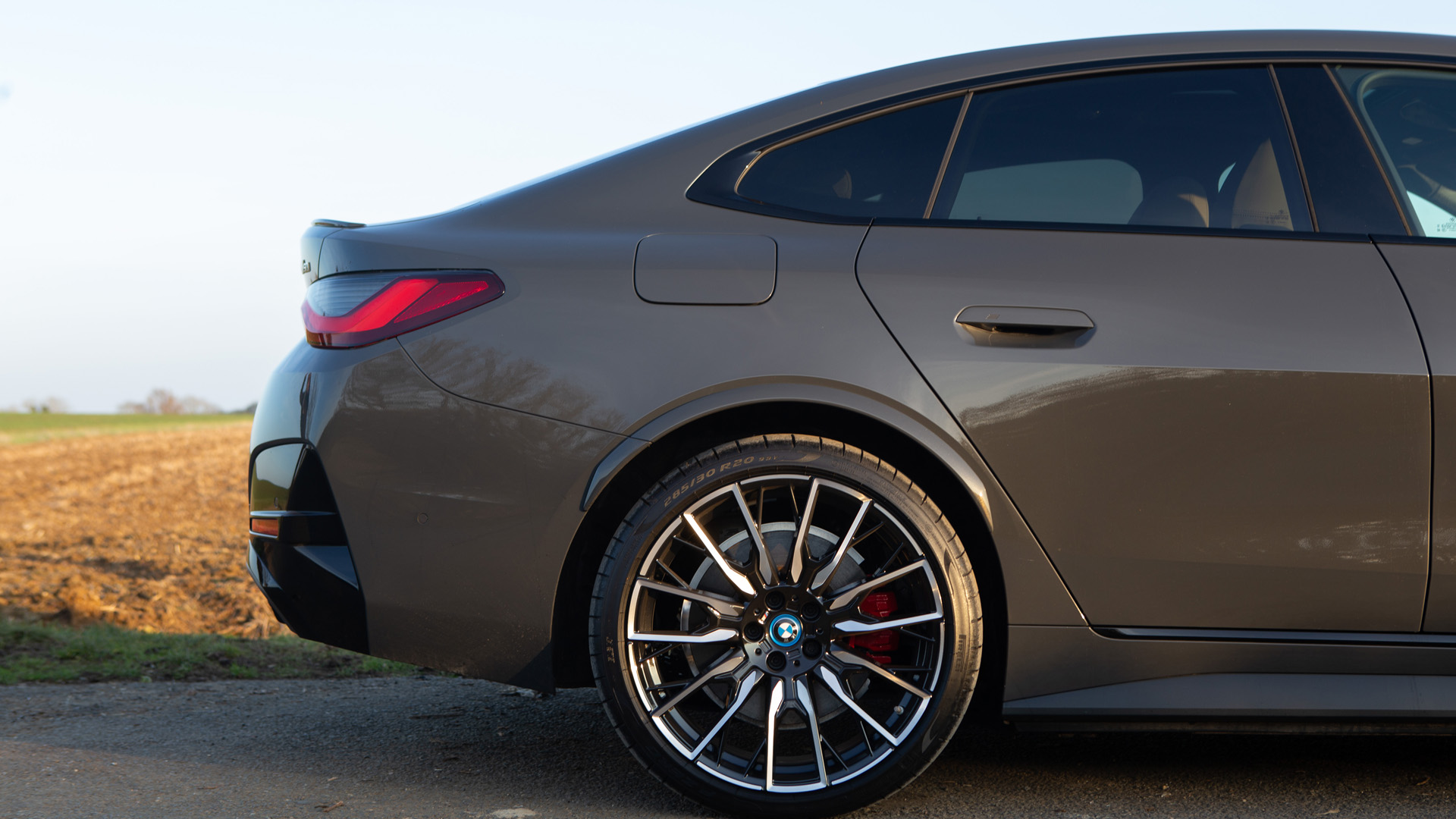
Also consider
If you don’t need the all-out power of the i4 M50, then the i4 eDrive40 is a sensible option. Costing roughly £10,500/$10,500 less than the M50, the eDrive40 has the same great looks and a respectable 335hp. With the motor just on the back wheels, it also behaves much more like a rear-wheel-drive BMW.
The Polestar 2 might seem like a less obvious alternative to the BMW i4 M50 but this attractive EV starts from $45,900, offering 408hp, a 4.5-second 0-60, and a 270-mile range. It benefits from the dedicated Android Automotive platform built-in and has all the advanced driving features you could hope for.
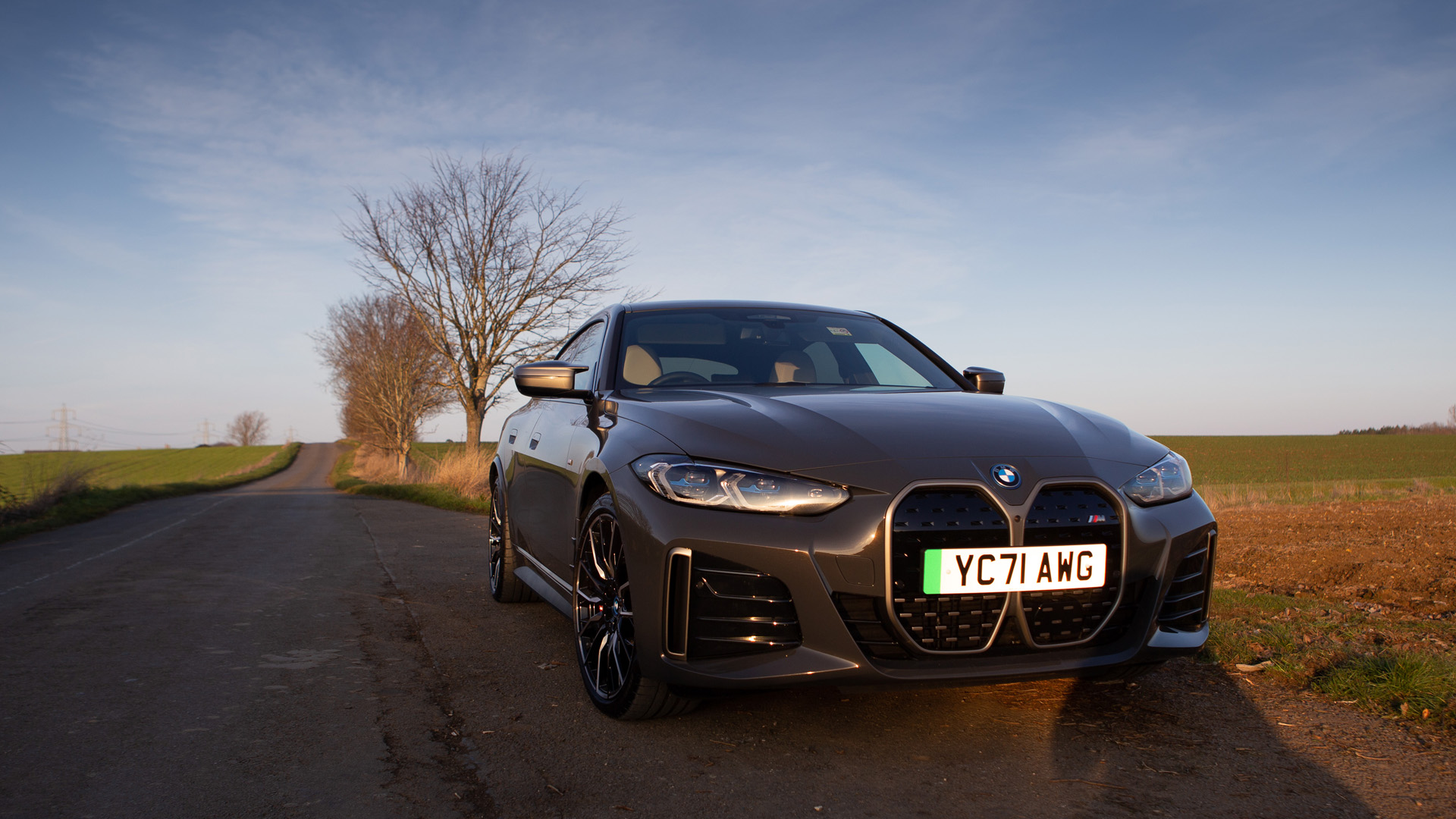

As T3's Editor-in-Chief, Mat Gallagher has his finger on the pulse for the latest advances in technology. He has written about technology since 2003 and after stints in Beijing, Hong Kong and Chicago is now based in the UK. He’s a true lover of gadgets, but especially anything that involves cameras, Apple, electric cars, musical instruments or travel.